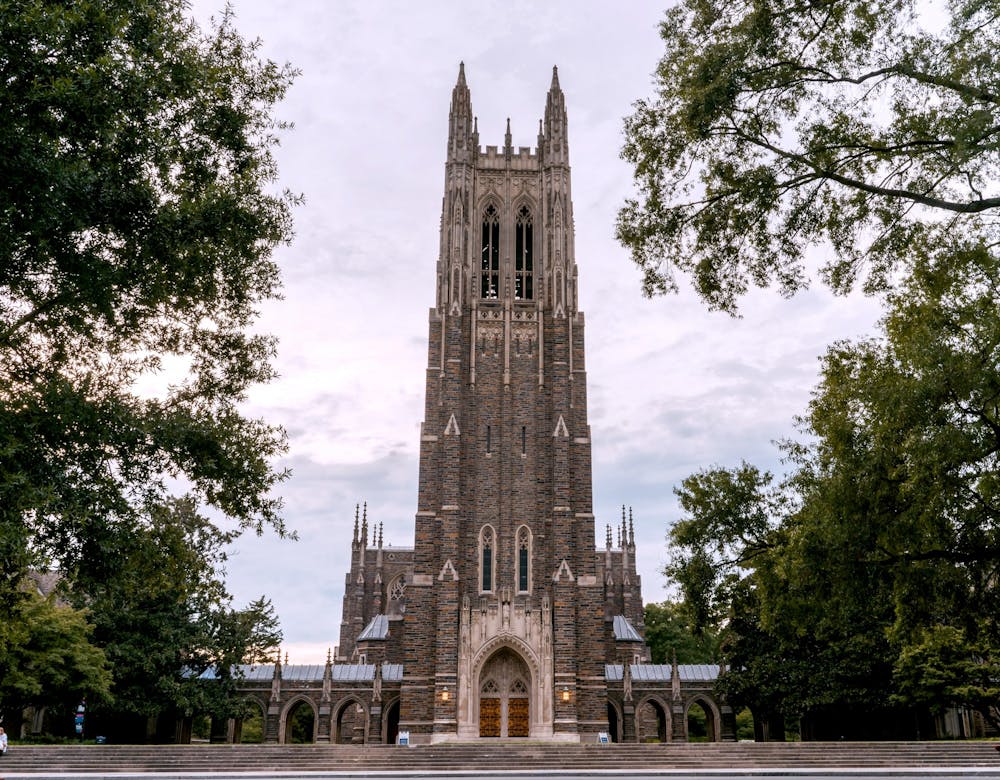The fall semester is drawing to a close, and Duke has avoided the fate of schools that have had to move classes online to control COVID-19 outbreaks. Now students will await, and administrators will prepare for, another semester during a pandemic.
Here’s a roundup of what we know so far about the spring 2021 semester.
What is the spring semester schedule?
Spring semester classes begin Jan. 20, 2021. The last day of classes is April 23, and exams end May 1.
Whereas the fall semester had no breaks, Duke recently added a two-day break and a wellness day to the spring calendar. The wellness day is not an official day off, but professors will be encouraged to let students engage in wellness activities instead of covering course material.
What will Duke do if conditions change before the semester starts?
Executive Vice Provost Jennifer Francis outlined four possible plans for the beginning of the semester to the Academic Council last week:
- Plan A is the current plan, with classes beginning in person.
- Under Plan B, students would sequester for three days at the beginning of the semester, and classes would be remote during the sequester period.
- Under Plan C, students would sequester for 10 to 14 days.
- Under Plan D, classes would begin remotely and Duke would only bring students back if public health conditions and travel restrictions permit.
Duke will shift to plan B or C if there are high baseline COVID-19 infection rates heading into the semester, Francis said at the meeting. The University will implement Plan D if local, state and regional coronavirus rates are higher than is deemed safe to bring students to campus.
Duke spokesman Michael Schoenfeld said in an interview that Duke would use a holistic process to determine whether to change plans. That includes examining campus conditions; local conditions; public health ordinances; and strain on hospitals, including Duke’s health system.
“We’ll evaluate a number of factors, and just be, as we were this year, we’ll just have to be prepared to make changes,” said Schoenfeld, vice president for public affairs and government relations. “We don’t control the circumstances. The circumstances control us.”
Asked about the current surge in COVID-19 cases, he said that “everybody is on a heightened state of alert, certainly in the health-care community.”
“What’s going to happen after Thanksgiving? If you’re running a health-care system, will you have enough employees to staff if large numbers of people are out for periods of time?” he said. “So there are a whole of dials here that have to be examined.”
Will restrictions on campus life change?
President Vincent Price said in an interview with The Chronicle this month that the spring semester will likely look similar to the fall.
“No one wants to see new therapeutics and vaccines more than I do, to help the globe work its way out of this, but it’s unlikely those will have the impact next spring that would allow us to be substantially different than we are today,” Price said.
This fall, Duke has required masking, social distancing and hand-washing, as well as limiting gatherings. Students living in Durham and faculty and staff who come to campus have to complete a daily symptom-monitoring survey and quarantine or self-isolate when asked. Duke closed off indoor dining spaces in the Brodhead Center, Marketplace and the Bryan Center last month to slow the spread of the virus.
Community members had to sign a document called the Duke Compact, agreeing to comply with Duke’s public health rules.
Price said that although most rules would stay the same, Duke would try to find ways to encourage more safe social interaction.
“As students become so exhausted, and faculty become exhausted, and really, at a certain point that strong desire—it's stronger than a desire, it's a need—for social interaction builds up,” he said.
Will there be entry and surveillance testing?
Undergraduate and graduate students coming to campus will be entry tested in the spring, as in the fall.
Entry testing will begin Jan. 9, Vice President of Administration Kyle Cavanaugh said at last week’s Academic Council meeting. Duke will start surveillance testing immediately after entry testing.
How many in-person classes will there be?
About 20% of classes will be in person in the spring, compared to 15% in the fall, Francis told the Academic Council last week. Hybrid classes likely accounted for much of that increase, she said.
Who can live on campus?
Juniors and seniors, most of whom could not live in Duke housing this fall, can live on campus in the spring, Duke announced last month. First-years and sophomores who are currently on campus can stay, and first-years and sophomores who were off campus this fall could also apply for housing.
Students had to apply for campus housing by Oct. 30, and Housing and Residence Life had received 700 housing applications by Oct. 27. Juniors and seniors have first preference for housing, then incoming first-years, then sophomores as space allows.
Joe Gonzalez, assistant vice president for student affairs and dean for residential life, wrote in a Monday email that HRL is still processing spring assignments for juniors and seniors but currently expects to have enough space to house incoming sophomores.
Get The Chronicle straight to your inbox
Signup for our weekly newsletter. Cancel at any time.
Matthew Griffin was editor-in-chief of The Chronicle's 116th volume.

